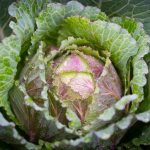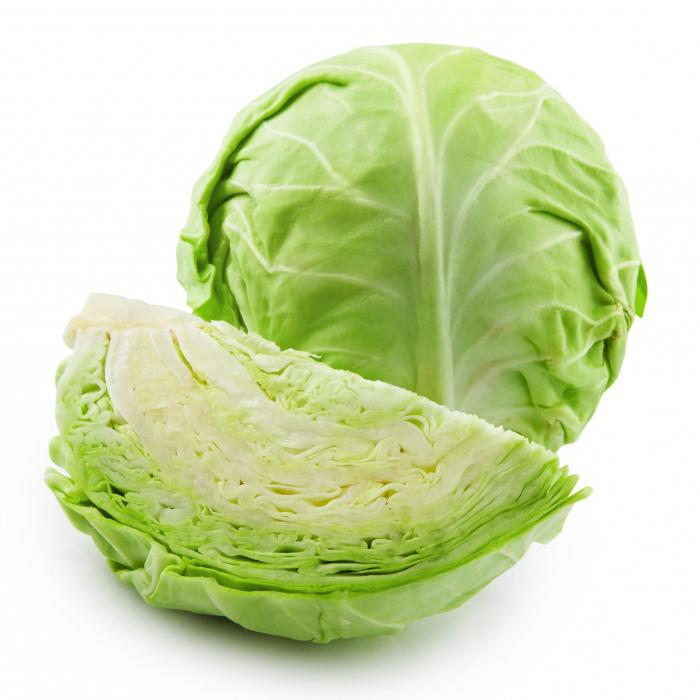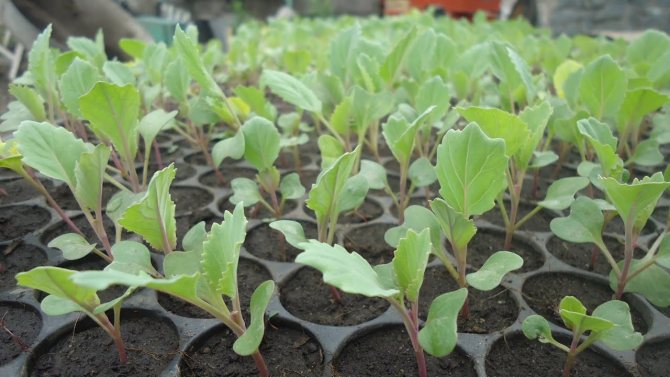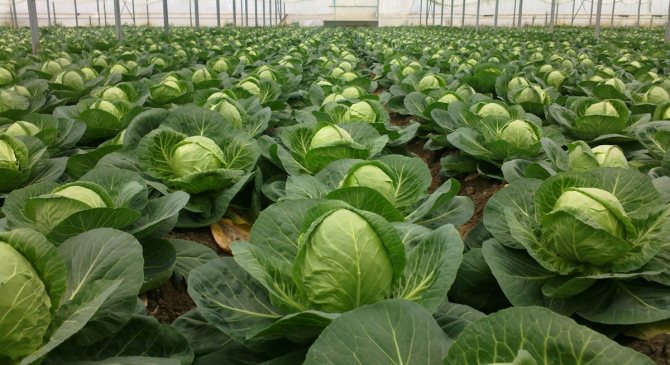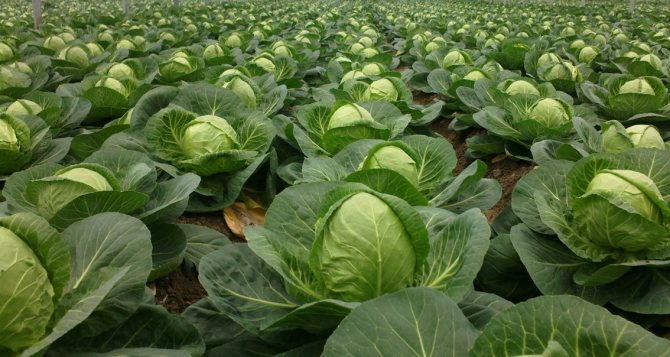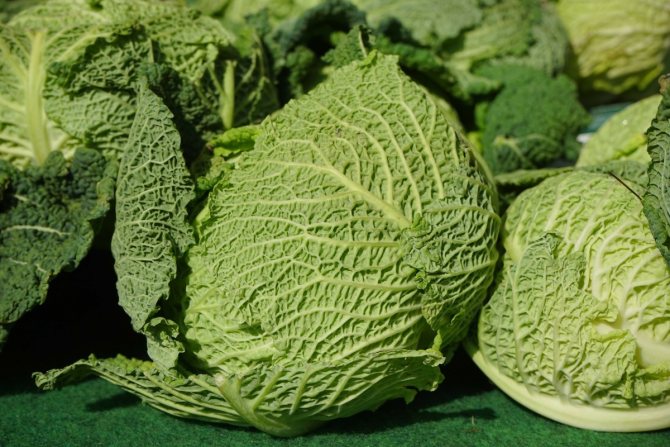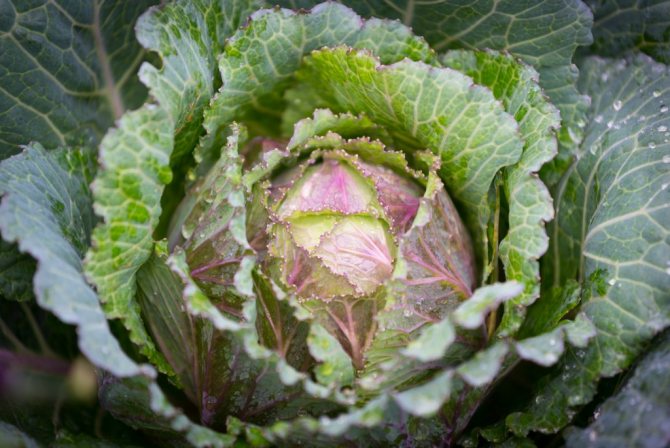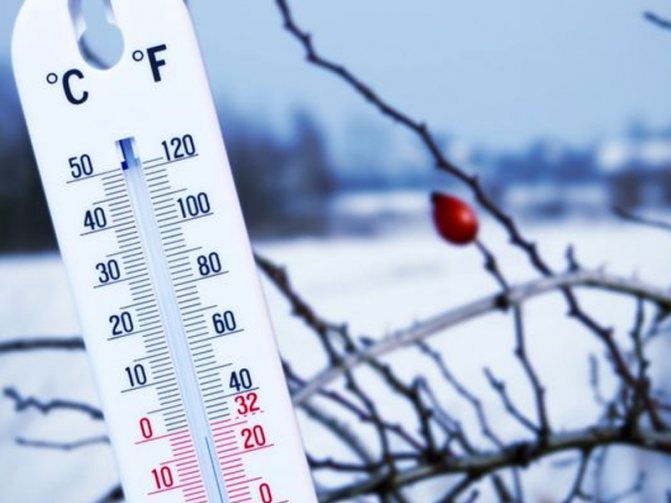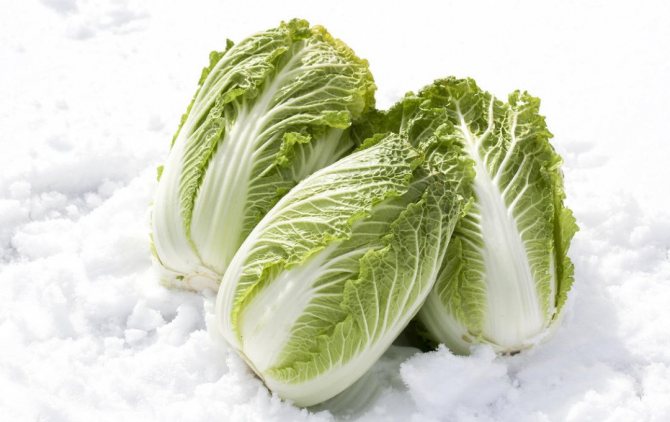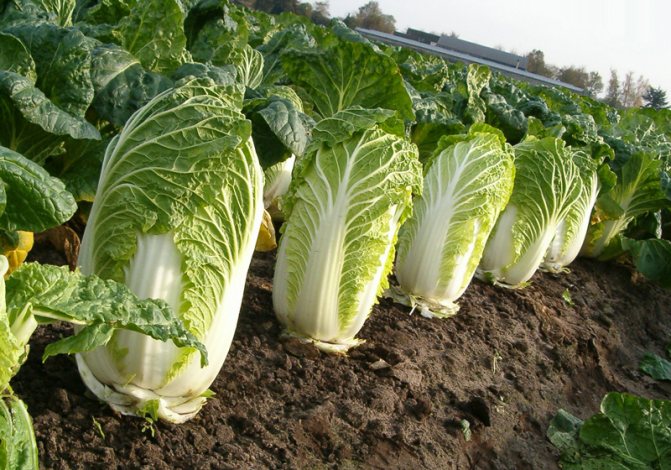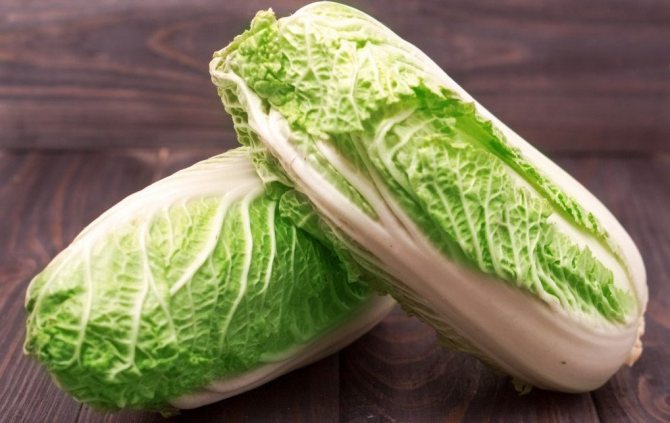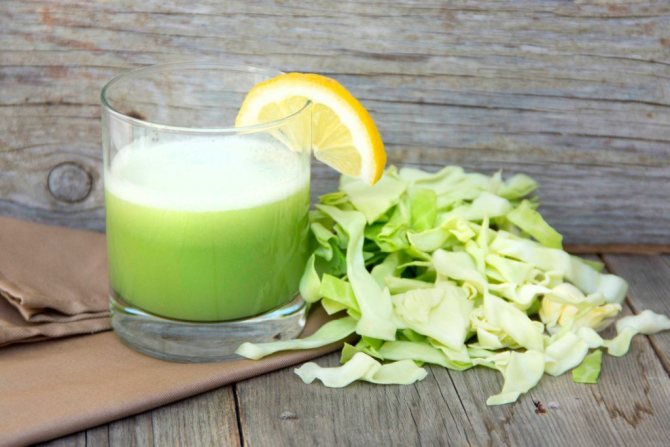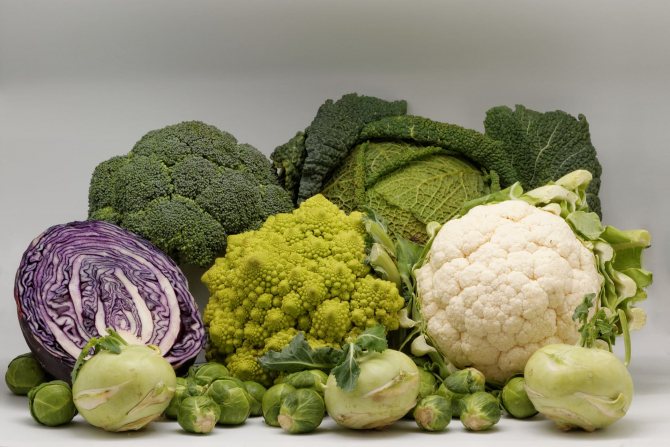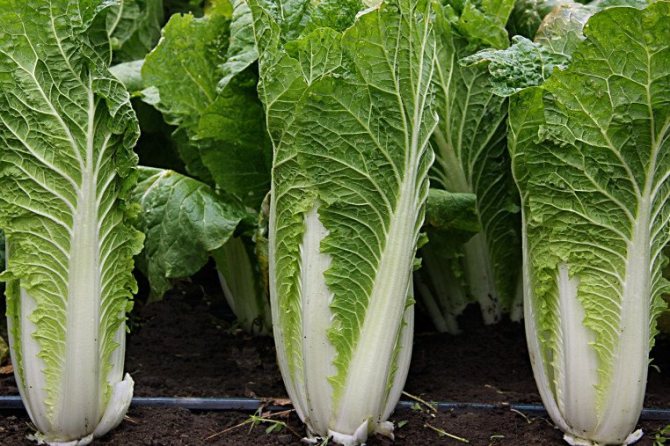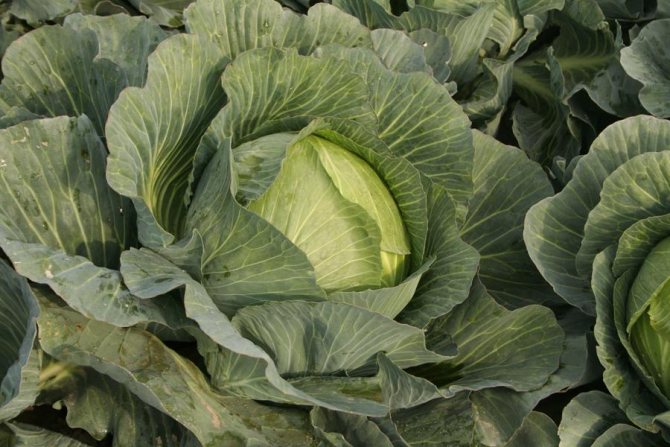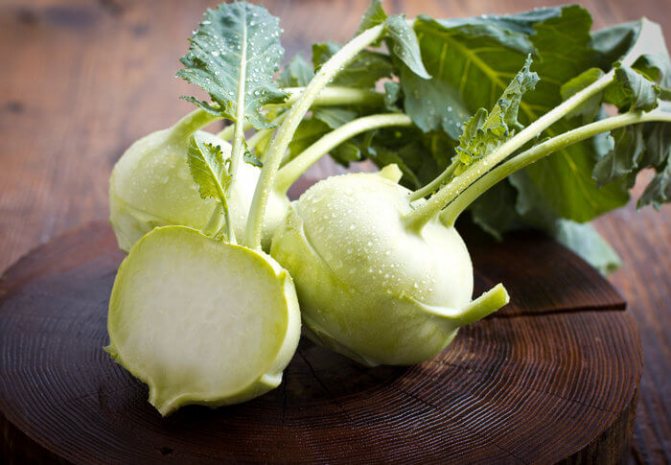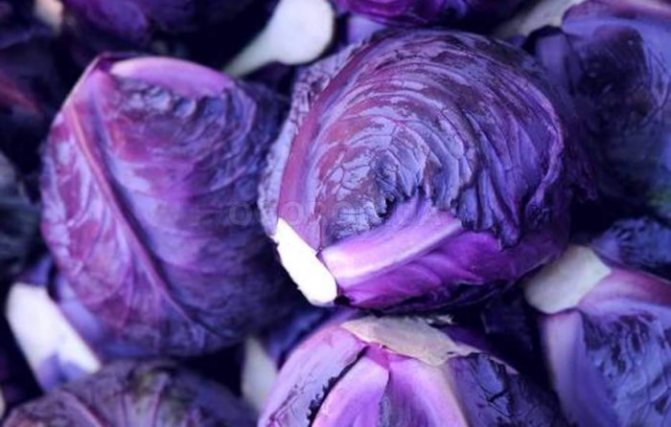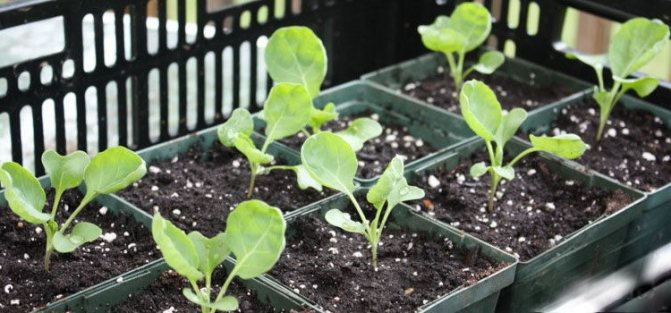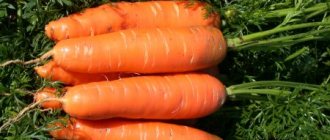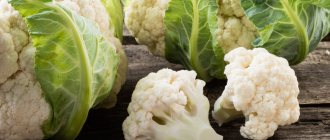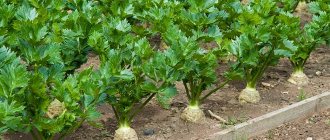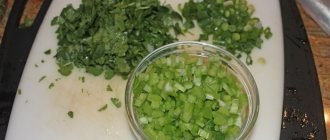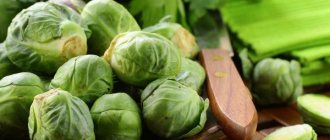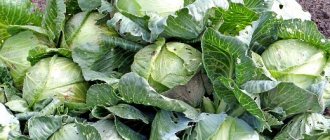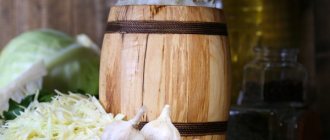Vegetable growing »Cabbage
0
923
Article rating
During the year, white cabbage is eaten fresh or sauerkraut, used in many dishes. It is not surprising that gardeners cannot imagine a vegetable garden without this vegetable. Cabbage and frost is a combination that can both strengthen and kill a culture.
How cabbage reacts to frost
Optimum temperature

The most optimal temperature at which the cabbage can grow normally depends on the age of the seedlings.
- When the seedlings have not yet appeared, the optimal room temperature is 18-20 degrees.
- If seedlings have already appeared, then the temperature can be reduced to 9-10 degrees during the day and 8-9 degrees at night during the first week.
- In the following days, it is best to keep the temperature at 10-15 degrees.
It is important to avoid too sudden changes in temperature, they can damage the sprouts.
These figures are average, but keep in mind that everything may vary slightly depending on the plant variety. For example, for cauliflower, you can raise the temperature by about 5 degrees.
Germination temperature can vary to a greater extent. Even at a temperature of 3-5 degrees, the seeds will still be able to germinate (in some varieties, it can be completely reduced to -5 degrees, but it is better not to take risks and focus on average indicators). More or less the optimal temperature, at the same time, can be considered 15-18 degrees. So do not worry too much about the temperature at this stage, as long as there are no drops.
We recommend that you read this video on the topic:
When to remove cabbage from the garden
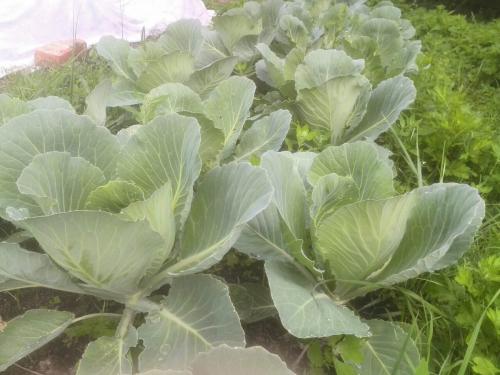

Cabbage is very healthy and tasty. Cabbage is used for pickling, in salads, in various soups and other dishes. Therefore, many gardeners grow cabbage in the garden. In order for the cabbage to be well stored, it is necessary to harvest it on time.
Cabbage should be harvested in the fall. But not every gardener knows when is the best time to harvest cabbage. After all, if you remove cabbage from the garden early, then in the cellar at elevated temperatures the heads of cabbage will lose their juiciness and elasticity. If you are late with harvesting, the cabbage will freeze. Such cabbage is no longer suitable for storage in the winter.
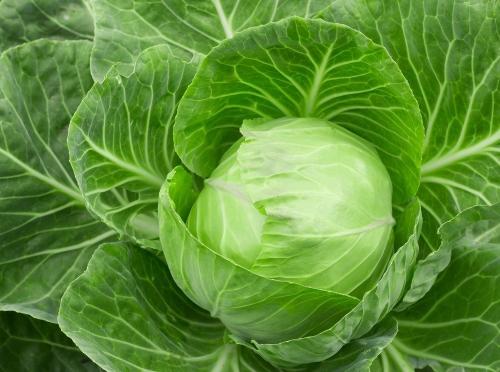

Signs of cabbage ripeness:
- The head of cabbage is dense,
- The lower leaves begin to turn yellow,
- The cabbage has reached the weight indicated on the package for this variety,
- The upper leaves begin to curl at the head of cabbage,
- The top of the head of cabbage changes color, becomes lighter and becomes shiny,
- Small shoots begin to grow on the stalk of the cabbage.
When to harvest cabbage.
Mid-season cabbage varieties must be harvested in September. Cabbage of this variety can be stored for about six months.
Late-ripening cabbage varieties should be harvested in October - November. Cabbage ripens within 150 days, the head becomes juicy and crispy. Cabbage can be stored under all conditions for 8 months.
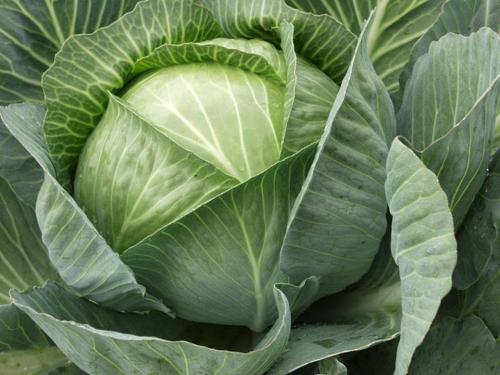

Because the weather conditions in each region are different. Then you need to focus on the air temperature in the fall. Cabbage is a fairly cold-resistant plant, therefore, it is able to withstand temperatures down to -2 ... -4 degrees. Therefore, after the first night frosts have passed, it is worth starting harvesting.
If the temperature is below 0 at night and during the day, then there is a risk of freezing the cabbage. In this form, cabbage is not suitable for storage. In this case, the cabbage must be processed immediately.
How to remove cabbage from the garden.
With a shovel or pitchfork we dig in the stem, then take it with our hands and loosen it, then pull out the cabbage. We remove the cabbage in a well-ventilated area. Best placed on planks to dry out the plant. Do not leave cabbage in the sun. Since this will reduce the storage time of cabbage in winter.
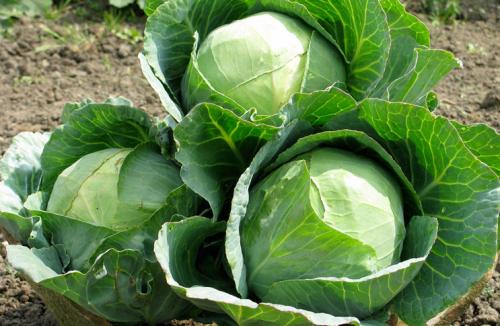

Depending on the storage method, we remove the cabbage in the cellar or in the basement. Cabbage can be hung by a cabbage or laid on shelves.
And you can find out how to use the resulting harvest on my channel "The Joy of Being", where I publish for you many exclusive recipes for homemade preparations.
How does cabbage tolerate frosts?
If the drop in temperature is small and does not last too long, it will not affect the health of the plant in any way. On average, a culture tolerates a drop to seven degrees well for a longer period.
But as for freezing temperatures, then everything here very much depends on the specific variety. If white cabbage can tolerate up to -5 degrees, then cauliflower, Peking or broccoli can tolerate up to -2 degrees of frost.
Helpful information
To keep the cabbage fresh for as long as possible, the following recommendations should be taken into account:
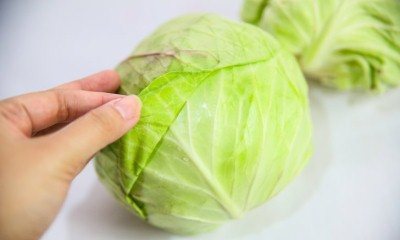

Heads of cabbage should be stored in bulk or in a container, away from ethylene-producing fruits.- The air should be not only cool, but also fresh. Poor ventilation leads to rapid deterioration of vegetables.
- Heads of cabbage must be stacked upside down.
- Vegetables can endure a short cooling to -1.5 degrees, but such a decrease in temperature should be short-term.
How to help the plant?


If it suddenly gets very cold, then there are several ways that will help to overcome the frost:
- Thermal insulation. That is, in other words, a shelter. You can use cloth or film.
- Smoke. Small bonfires are made along the edges of the beds. The smoke screen helps to compensate for freezing temperatures.
- Top dressing. The better the plant is fed with fertilizers containing phosphorus and potassium, the more likely the plant will survive the problem period well.
Heads of cabbage clean, but not white: preparation for storage
Before laying cabbage in a storage or cellar, heads of cabbage are cleaned of plant residues.
The cellar is being repaired, dried and aired. For disinfection, it is whitewashed with freshly slaked lime, adding copper sulfate to it (100 g per 10 liters of solution).
Heads of cabbage are cleaned before storage, leaving 2-3 cover sheets.
Our advice:
You can not peel the cabbage white - the upper leaves are more resistant to disease.
It is also undesirable to store cabbage with a rosette of leaves, since air exchange deteriorates and losses from diseases increase.


In order to reduce weight loss (natural weight loss) and reduce waste during stripping, it is very important to slow down the process of kidney differentiation when storing food products, that is, to prolong the state of dormancy for a longer time. This is possible provided that the temperature in the storage is reduced as much as possible.
Hardening procedure
An excellent way to improve seedling quality is to harden the seedlings before planting. Then the plant will be much more effective in resisting both frost and diseases or pests.
To do this, you do not need to perform any particularly difficult actions, just in one and a half or two weeks you can temporarily rearrange the seedlings on the balcony - you can even leave it there for the night, it's okay. If the temperature outside during the day is above 7 degrees, then you can take out the seedlings for the day and outside, and at night indoors.
But young seedlings planted in the ground should not be stressed - if frost begins, then it is best to cover them thoroughly at night. A compromise option would be an unheated greenhouse.
You can harden cabbage even at the seed level - for this, it is enough to immerse the seeds in the first days of April into a container where there is warm water. After about half an hour, they must be transferred to a container with cool water, after drying a little. Optionally, you can add a little fungicide to the liquid, which will simultaneously "etch" the plant.
Impact on frost resistance
Seedling method or sowing by seeds
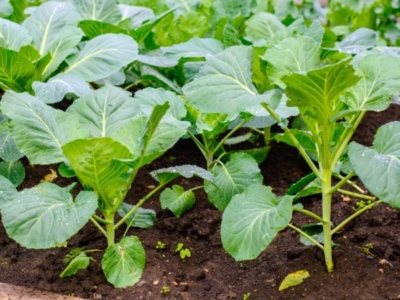

With the seedling method, the seeds are planted directly in the open ground. In case of unforeseen frosts, the seeds may die, since they are not sufficiently formed and strengthened for stressful situations.
With the seedling method, young plants have time to form a root system and strong stems. In addition, you can weed out potentially weak plants and leave only strong and hardy specimens for planting outdoors.
Hardening before moving into the ground
Hardening of seedlings increases the frost resistance of cabbage. This method prepares the seedlings for constant conditions in the garden, increases their immunity to stressful situations and temperature changes.
Varieties
There are early maturing and frost-resistant varieties, which are genetically more resistant to temperature changes than usual. Therefore, before planting a crop, it is better to familiarize yourself in detail with the selected variety. You can read the suitable growing conditions on the seed packet.
When can you plant
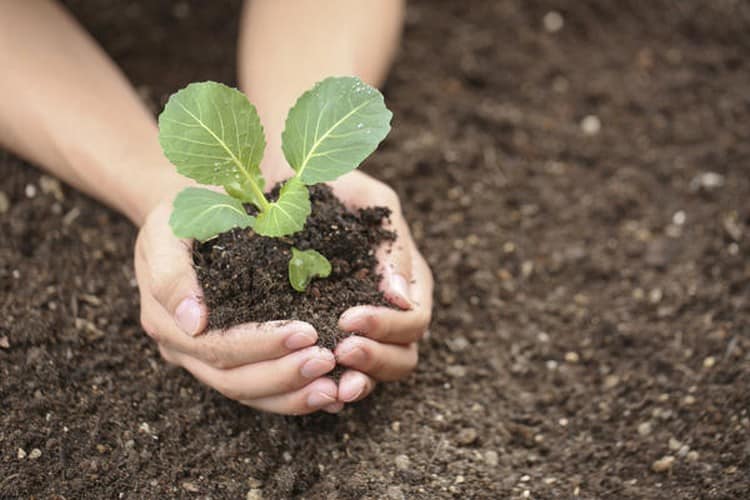

When planting cabbage seedlings, you need to focus not only on the thermometer readings, but also on how much time has passed since the emergence of seedlings. It is usually recommended to wait a month or two and make sure the seedlings are healthy, have a strong stem and at least 4-5 leaves that are already rich green. Here's how long you need to navigate so that the temperature is optimal:
- The beginning of May is the optimal time for early varieties. The end of April is also fine.
- Mid-May - mid-season varieties are planted.
- End of May - late-ripening varieties are planted.
If you do not want to take risks, then in the middle of May or closer to the end, you can, in principle, plant any varieties.
Frost resistance
Adult plants in the technical ripeness phase of the head of cabbage have cold resistance depending on the species and variety. At the same time, late-ripening hybrids and varieties have a greater resistance to frost than mid-ripening and early ones.
We suggest that you familiarize yourself with: Sauerkraut for the winter in cans - 7 very tasty recipes for crispy cabbage
| Variety | Cold resistance |
| Early white cabbage | up to -5 |
| Medium white | until 6 |
| Late white cabbage | up to -11 |
| Color | to -1 |
| Medium early redhead | until 6 |
| Late redhead | up to -8 |
| Kohlrabi | up to -5 |
| Brussels | to -2 |
Summing up
Cabbage is not a very demanding crop, so in most cases you will get it right. But still it is worth remembering that there are several important principles, one way or another related to temperature:
- On average, seedlings can survive at temperatures of 3 degrees (varies for different varieties), but keeping them around 15 degrees will be much more optimal.
- It is important to avoid strong changes in temperature, this is very harmful to the plant.
- Seedlings must be hardened to avoid diseases and make them more resistant to temperature extremes.
- Planting is best done in mid-May, although this may vary depending on the variety.
- If the temperature is low enough, it is advisable to take measures to protect the plant from the effects of the cold.
Cabbage is one of the most popular crops in the beds of every gardener. It is used in blanks for the winter period, consumed fresh, and hot dishes are prepared from it.It can be difficult to get a good cabbage crop, as the plant is attacked by pests and is susceptible to many environmental factors.
It is worth considering when planting what temperature cabbage seedlings withstand. It depends on how soon a young plant will take root, and also a head of cabbage is formed.
Frozen pears are practically not stored
Sometimes, under the best storage conditions and compliance with all characteristics (temperature, humidity, harvest time), cabbage quickly rots. Why do the heads of cabbage spoil and what to do to prevent them from rotting?


Table - Reasons for poor storage of cabbage
| Factor | Why | What to do |
| The plants were overfed with nitrogen fertilizers. | Nitrogen loosens the structure of the leaf, reduces the amount of dry matter in it. | Give up chemistry and switch to biological methods of protecting and feeding plants. This crop should be processed for fermentation or dried. |
| Incorrectly selected variety | Early maturing varieties are not stored for a long time. You can store mid-season varieties (up to 3 months). For long-term storage, medium-late (up to 6 months) and late (up to 8 months) varieties are required. | The crop cannot be stored, it can be dried. |
| Incorrectly selected soil | Better than others stored cabbage, which grew on loam, worse - grown on sandy loam. | Observe the rules for choosing soil for the cultivation of this crop. |
| Early cleaning | Causes wilting of heads of cabbage (they received less nutrients and moisture). | Harvest cabbage in a strict temperature range (3 8 - during the day, -2 -3 - at night) and ripeness stage. |
| Storage humidity too high | Causes the appearance of rot on the stump and leaves. | Arrange ventilation, spread the heads of cabbage at some distance from each other. |
You can store cabbage not only in special vegetable stores. You can create optimal conditions in an ordinary cellar or earthen hole. It is important that the temperature and humidity conditions are optimal, then your harvest will last until spring.
Experienced gardeners recommend harvesting pear fruits before the air temperature drops below 8 ° C. Otherwise, you can be left without fresh and juicy fruits.
Frozen pears should not be stored. Better to recycle them.
- What to cook from pears for the winter - 20 recipes for tasty and healthy preparations
Canning pears with benefit and taste.
- 15 recipes for extraordinarily delicious pear pies. Guests will ask for supplements!
Delight your family and guests with homemade pear pies!
- 9 alcoholic and non-alcoholic pear drinks. Write down recipes!
A great option to use the pear harvest!
Description of cabbage
Cabbage by its origin is a two-year-old plant. In the first year she gives a head of cabbage, and in the second year - seeds. In industry, some farms grow crops to obtain seeds, but gardeners are engaged in cultivation only to obtain a cabbage crop.
Additional Information. Broccoli and cauliflower yield in the form of inflorescences, they differ in that the first is green, the colored one gives a crop of white, pink, yellow inflorescences, similar to a ball. Another popular representative of this culture is kohlrabi. It is not the leaf (cabbage) that is harvested from her, but the root itself. Juicy root heads are used in the preparation of salads, they are even pickled.
Popular species and varieties
In the bulk, white cabbage is grown everywhere. Of the huge list of varieties, the most popular are:
- Belarusian 455;
- Sail;
- Kazachok,
- Glory 1305
- Moscow late;
- Dietmarscher Fruer.
All of them gained their popularity among summer residents, thanks to their taste, good keeping quality and resistance to temperature extremes, damage from pests and diseases.
Among exotic species, for example, broccoli are popular varieties:
They grow well outdoors and in greenhouses. Withstand temperature drops up to minus 20C. The value of the varieties lies in the rapid formation of heads and the duration of storage.
Important! The biggest problem with cauliflower is keeping quality, it starts to darken and later rot. Therefore, it must be stored in a cool place (refrigerator, freezer or special warehouse).
Popular varieties of this species:
- White beauty;
- Amerigo;
- Movir;
- Goat Dereza;
- Express;
- Snowball.
In recent years, kohlrabi began to be eaten in the post-Soviet space. In warmer areas, it is grown even outdoors. Its value is the root head. In terms of vitamin composition and dietary fiber content, it is not inferior to the white-headed species.
Common varieties:
- Violet;
- Giant;
- Delicacy white;
- Goliath is white;
- Vienna blue;
- Viennese white.
What temperature broccoli can withstand. Growing broccoli outdoors
Broccoli has gained popularity on a par with beets, carrots, other cabbage varieties and traditional crops. In cultivation, it is not whimsical, does not require much effort and time. The vegetable tolerates heat, cold, adapts to the domestic climate. Has a delicate taste. You can achieve a large harvest, high-quality fruits, knowing the rules of how to grow broccoli.
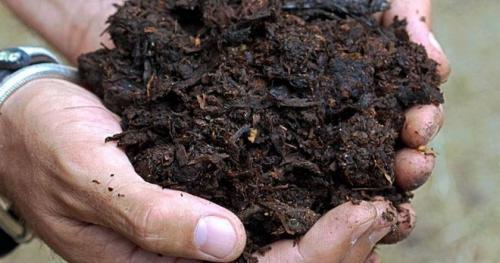

Planting broccoli outdoors
Cultivation begins in March, when the seeds are prepared for seedlings. For this, the conveyor method of sowing is suitable, which is carried out several times at intervals of once every two weeks. The sowing period lasts until June. The type of broccoli variety, care and cultivation in the open field is selected from the quality of the land, the climate. For example, late varieties are not recommended to be grown in regions with cool summers, since the fruits will not have time to ripen. In such an area, mid-season or early varieties are better suited. The landing procedure is as follows:
- Before sowing, the seeds are necessarily sorted, large ones are selected. They are poured with warm water and allowed to brew for 20 minutes. Then the crops are treated with Epin's solution, washed with running water. In the case of using seedlings, planting broccoli cabbage in open ground is carried out when the bushes have reached 40-50 days of growth. Readiness for planting is determined by the presence of real leaves in the amount of 5-6 pieces. The period begins in mid-May.
- For landing, an illuminated and ventilated place with protection from northern cold winds is selected. It is advisable to choose the beds on which there were green manure crops before. For cabbage - carrots, onions, grains and legumes. Bad predecessors are beets, radishes, tomatoes. If earlier such plants germinated on the site, then broccoli is planted only after 4 years.
- As soon as the seedlings take root in greenhouse conditions, a pick is carried out in two weeks. It is planted in small peat pots, which are then transplanted into the ground.
After a dive, the cabbage is protected from sunlight for several days. Recommended to grow in greenhouses up to 21 ºC. Be sure to fertilize broccoli seedlings with agents that contain a substance like molybdenum, boron. As the seedlings grow, the temperature in the greenhouse gradually decreases, and hardening procedures are carried out two weeks before transplanting.
Ripening broccoli outdoors
Broccoli cabbage is distinguished by the cultivation of fruits for a period of 3-4 months. Three large fruits can be collected from one bush, since after harvesting the central heads, large lateral shoots grow. The inflorescences are cut off in green. When yellow flowers appear, the vegetable becomes overripe and unsuitable for food. You can use the loose buds to determine when to cut broccoli. They are cut in the early morning from the central and lateral shoots. You can also eat the stem itself, on which the head grows. Early-ripening broccoli will keep in the refrigerator for about a week and can be frozen.
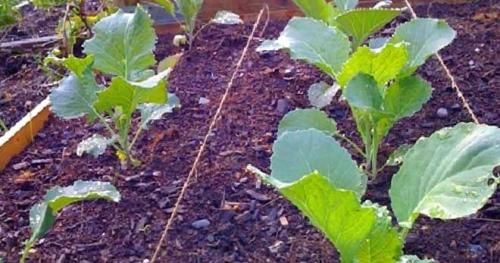

Ripening dates for broccoli outdoors
There is no exact time when to cut broccoli outdoors. Ripening dates depend on the variety, its early maturity. You can roughly determine the time from the description of the seeds on the package. It is impossible to delay the harvesting period, otherwise the entire crop will be unusable. The process of flowering and ripening of broccoli heads is accelerated. Cabbage has a unique property: if you cut off the main head in time, then new fruits, slightly smaller in size, quickly ripen from the axillary buds. Sometimes new heads are ready in two weeks.


Broccoli leaves, which are boiled and stewed, are of great value. This also applies to the stem, if it is strong and juicy. It is best to freeze and cook them immediately after defrosting. It is believed that if vegetables are harvested in the early morning, they will last longer. Broccoli cabbage care and cultivation in the open field with the requirements gives a vegetable rich in vitamins, useful microelements.
Agricultural rules
Important! The wrong approach to growing crops can lead to the death of seedlings, even in greenhouses. It is possible to chill the plant with the slightest oversight in cultivation.
Spring sowing, which takes place in early April (in warm zones - 2-3 weeks earlier), should be accompanied by hardening of the planting material. The seeds are immersed in a container of warm water. It takes about half an hour to keep them in it. After which they are slightly dried and transferred to a cool container. During the hardening process, etching can be carried out by adding a fungicide to the liquid.
After sowing seedlings in open ground, it is imperative to cover the crops with spunbond or film. This will protect the seedlings from frost in early spring. If there is a fear that the soil will freeze and the seeds will not germinate, you can sow them in cups. You can keep young plants in them until the plants become cramped.
Gradually, the container with the culture can be taken out into the street for hardening, and later transferred to an unheated greenhouse. Seasoned seedlings will no longer be able to freeze. This method of growing for seedlings is also good in that it is not necessary to plant each potato separately, thus there is less injury to young seedlings.
Note! The culture is planted in a permanent place in mid-May, when the soil warms up well, the threat of prolonged negative temperatures will subside and it is no longer necessary to cover crops.
What factors determine the timing of harvesting
Quite a lot of factors influence when exactly to harvest cabbage. The main among them are the climatic conditions of the growing region and the ripening time of a particular variety.
Climatic conditions
The climate in the process of cabbage ripening plays a rather large role. This culture loves damp, cool weather. Accordingly, if the summer was just like that, then heads of cabbage form on the bushes in the shortest possible time and the vegetable ripens quickly. If in the summer period there was dryness and intense heat, the growth of the culture is suspended and the harvest will have to wait longer.
The type of climate also affects the time of planting seedlings in open soil. So, in the southern regions, planting is carried out in May. To the north at this time there may still be severe frosts, therefore, the sowing of seeds and the transfer of seedlings to the beds are postponed. Accordingly, the ripening of the heads in this case takes place later. In different climatic zones, the difference in ripening times for the same variety can be up to a month.
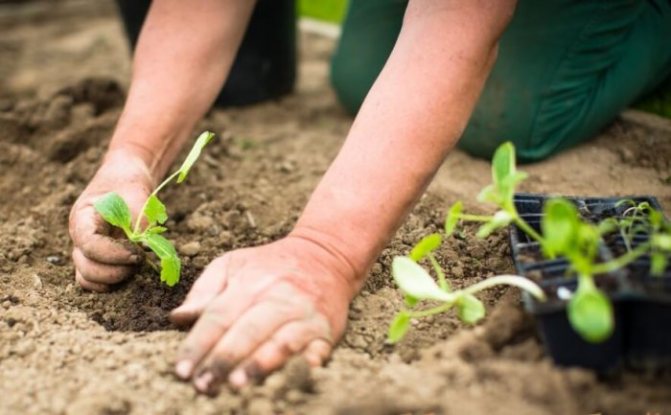

Planting seedlings in open soil
Ripening period of the variety
For each variety of cabbage, the duration of the growing season is individual. This factor also affects the determination of the exact timing of harvesting cabbage. In accordance with the duration of plant development, all varieties are divided into three types:
- Early cabbage.
- Mid-season varieties.
- Late varieties.
For early cabbage to ripen, it takes about 90–100 days from the moment of sowing the seeds into the soil. As a rule, the timing of its harvesting falls in mid-July - early August. Early species are not suitable for storage. In addition, it is impossible to delay the harvesting of such a culture, since the heads quickly crack after ripening.
Mid-season and late varieties ripen for 130–150 days. It is much easier to save such cabbage. Moreover, it is suitable for fermentation. Ripe forks are harvested in the last decade of September and early October.
Cabbage and frozen
Slight drops in temperature can withstand seedlings of any type of culture. Short-term suppression will not disrupt plant development and will not affect leaf formation or head formation in any way. An adult cabbage plant can withstand frosts up to 7 degrees in the fall. Now more about how cabbage tolerates frosts, and how to mitigate their influence on the culture.
There are many proven methods of frost protection:
- Smoke. It is used both in early spring, when the temperature is still unstable, and before harvesting. Small bonfires are laid out in several places (along the edges of the beds). The smoke curtain softens the negative temperature;
- Sprinkling. Crops are sprayed with warm water using a fine spray. In the process of freezing the sprayed water, heat is released, which the plants receive;
- Thermal insulation. Artificial covering of beds with foil, cloth, paper protection - all this helps to prevent freezing of the ground and freezing of plants;
- Top dressing. Feeding saves gardeners in the northern zones. Feeding with phosphorus-potassium fertilizers increases the resistance of young plants to frost up to 5 degrees.
Temperature requirements
When growing a vegetable, both seedling and non-seedling methods are used. Temperature regimes for growing seedlings in spring and autumn are different. Without their observance, young seedlings will be weak and painful, and by autumn the vegetable will form a poor-quality head of cabbage.
For seedlings in spring
| Period | White-headed Redhead | Color | Kohlrabi | Brussels |
| Seed germination | 18 — 22 | 20 - 24 during the day | 18 - 20 during the day | 20 - 22 during the day |
| 1-7 days after germination | 16 - 18 round the clock | 18 round the clock | 18 round the clock | 17 - 18 round the clock |
| 7-15 days from the beginning of germination | 18 in the afternoon 13 at night | 18 in the afternoon 16 at night | 17 - 18 in the afternoon 13 - 16 at night | 18 in the afternoon 15 at night |
| 15-35 days from the start of germination | 18 - 20 in the afternoon 16 at night | 20 in the afternoon 16 at night | 18 - 20 in the afternoon 16 at night | 20 in the afternoon 16 at night |
Lowering the temperature at night will prevent young plants from pulling out and allow them to grow a more powerful root system. In addition, the seedlings turn out to be squat, it is easier to transfer planting to a permanent place in the ground.
For culture in autumn
| Variety | In the afternoon | At night |
| Early white cabbage | 18 — 25 | 13 — 18 |
| Medium white | 20 | 16 |
| Late white cabbage | 14 — 18 | 10 — 16 |
| Color | 20 — 25 | 18 |
| Medium early redhead | 18 — 20 | 16 |
| Late redhead | 16 — 20 | 16 — 18 |
| Kohlrabi | 18 | 16 |
| Brussels | 20 — 25 | 18 |
Subzero temperatures
Frost affects different varieties and varieties of this culture in different ways. Some are able to withstand up to minus 10 degrees, others cannot tolerate even at minus 1, they begin to become fragile, get sick and require urgent rehabilitation. Therefore, it is difficult to give an exact answer whether cabbage is afraid of frost, since it is all individual.
What negative temperature conditions the cabbage can withstand:
- White-headed during development is able to withstand up to 5 degrees of frost. If the temperature is lower, the yield will be much worse. Before harvesting, the formed head of cabbage can hold on well even at minus 10;
- Peking cabbage (seedlings) tolerates temperatures down to minus 2 degrees. The formed (adult) plant can withstand frosts down to minus 5 degrees;
- Cauliflower is not so stable, at any stage of development it is maximally able to withstand up to 2 degrees of frost and no more than 2-4 days;
- Broccoli in the seedling stage of development, if the spring is cold, can tolerate temperatures of minus 2 degrees well. An adult crop plant feels fine at minus 5 degrees.
Cabbage, especially white cabbage varieties, tolerates frosts well, so today it can be seen on the plots of gardeners and summer residents in almost all regions of the country, even in the Arctic. What negative temperatures cabbage can withstand at different stages of development is mentioned above.
A phenomenon such as frost does not give pleasure to gardeners during spring planting or before harvesting. How to reduce possible losses, and cabbage to how many degrees withstand frosts in the seedling stage of development, is described in this article.
Features of the
When to cut cabbage for storage according to the lunar calendar? In 2015, according to the lunar calendar, the most favorable days for harvesting cabbage for the winter are October 3, 8 and 9. It is better to pick cabbage on days when the moon is waning and is in fire signs. For fermentation, you can choose any day, with the exception of the full moon, new moon and the Moon's stay in the sign of Virgo.
When to store late cabbage? You should not rush to harvest late cabbage for storage: cabbage continues to grow in the fall, despite the cold. Therefore, even in September, it needs care: watering, feeding loose heads of cabbage with a mullein and hilling.
Watering must be stopped 14 days before harvesting. Bulky heads of cabbage, receiving food from the soil, can crack, so their roots are buried.
When to store medium-ripened cabbage for the winter? In Russia, mid-season cabbage is harvested in September, when the weight of the head of cabbage will be at least 2 kilograms.
During the harvesting of medium cabbage, not all the cover leaves on the heads of cabbage are cut off, a couple of leaves are left to protect them from dirt. Ripe heads of cabbage have a light speck on the top, as in the photo:


To store Savoy cabbage for six months, it is harvested with the top leaves tightly attached to the heads of cabbage.
Savoy cabbage is highly resistant to low temperatures, compared to white cabbage. Read more about harvesting white cabbage in our article.
Early ripening varieties are cut when the heads of cabbage reach 600 grams. Late ripening - 2 kilograms.
Cabbage Kolobok is a hybrid of white cabbage. Late maturing. Ripens 150 days after sprouting. The heads of cabbage are round, small (weigh about 2 kg) and dense, the stump inside them is not long. Cracking is not typical for this variety.
Cabbage Megaton is a very productive medium late hybrid of white cabbage. Resistant to cracking. Heads of cabbage are heavy (8 - 15 kilograms). Harvested as they ripen.
Peking cabbage - during the harvesting of Peking cabbage, only hard, young heads that are not lagging behind in development are selected for storage. They are cleared of substandard and outer leaves that do not adhere tightly to the heads.
So that the heads of cabbage do not dry out too much, a few protective leaves should remain on them. When cutting Chinese cabbage, care must be taken not to damage the central veins of its leaves.
It is not worthwhile to linger with the transportation of this cabbage after cutting to the refrigerator.
Slava is a medium ripeness variety. Prone to cracking. As a rule, Slava is removed in 2 doses: approximately September 15 and September 30. The cabbage is ready for harvesting if a spot of a lighter shade than the entire head of cabbage appears on the top of the head of cabbage.
Seedlings for a good harvest
To get excellent material for diving or landing in open ground, you must follow a number of rules:
- It is worth making a temporary covering greenhouse - under a film or agrofibre.This will save time for hardening, which will need to be carried out regularly after germination and as the seedlings grow;
- Sow seeds in well-moist, fertilized soil. The land should be "light", then the seedlings will grow faster;
- When the seeds sprout, it is necessary to make conditions under which the temperature should not rise above 7-10C in the first 2-3 days. At the same time, ventilation and illumination are increased, otherwise the plant will begin to grow, strongly stretching upward. With such seedlings, good seedlings will not work, and everything will have to be sown again;
- It is necessary to monitor nighttime temperature rises - they must be avoided, therefore, it should be maintained at 4-5 ° C below daytime. When the seedlings get stronger, and obvious "favorites" will be visible, it is worth ordering the garden bed and removing weak plants.
Important! In such conditions, strong roots, large "squat" leaves are formed, and the seedlings increase their survival rate at the main planting site.
How many degrees of frost the cabbage can withstand is detailed above. Gardeners should remember the effect of frost on the development of plants, so that this does not entail losses in the yield.
Advice
When growing an agricultural vegetable crop, you should take into account some recommendations that will help facilitate the work of the gardener, as well as improve the survival rate of plants. The main ones are:
- Purchase seed material based on the climatic conditions of the region where the cabbage will be grown. And also to study what thermodynamic parameters the variety or hybrid can withstand.
- Prepare seeds for planting: disinfect with fungicides, treat with activator preparations.
- Do not allow the air temperature to rise at night when growing seedlings, as this will lead to depletion of the plants.
- Provide young seedlings with good ventilation and additional lighting at the initial stage of growth.
Knowing what temperature parameters each type of vegetable tolerates, observing the basic agrotechnical techniques during cultivation, it will not be difficult to get a good harvest of cabbage.

